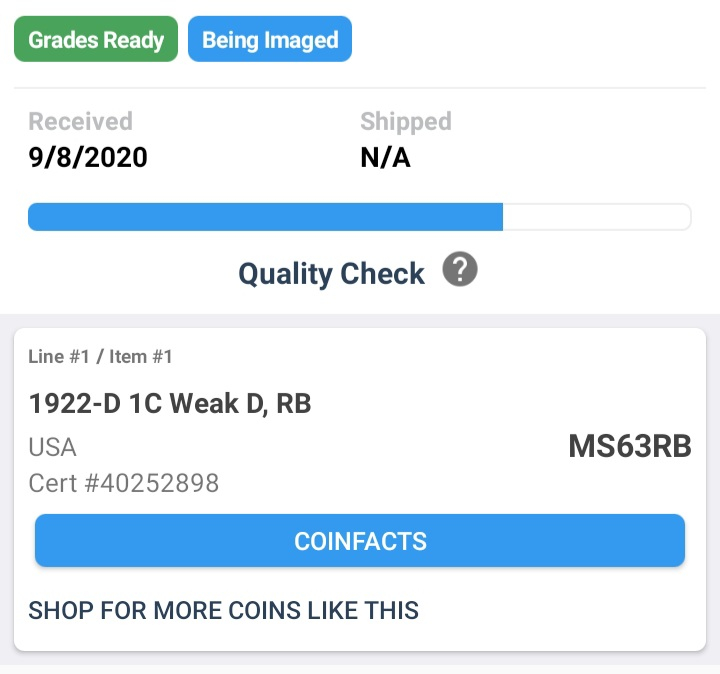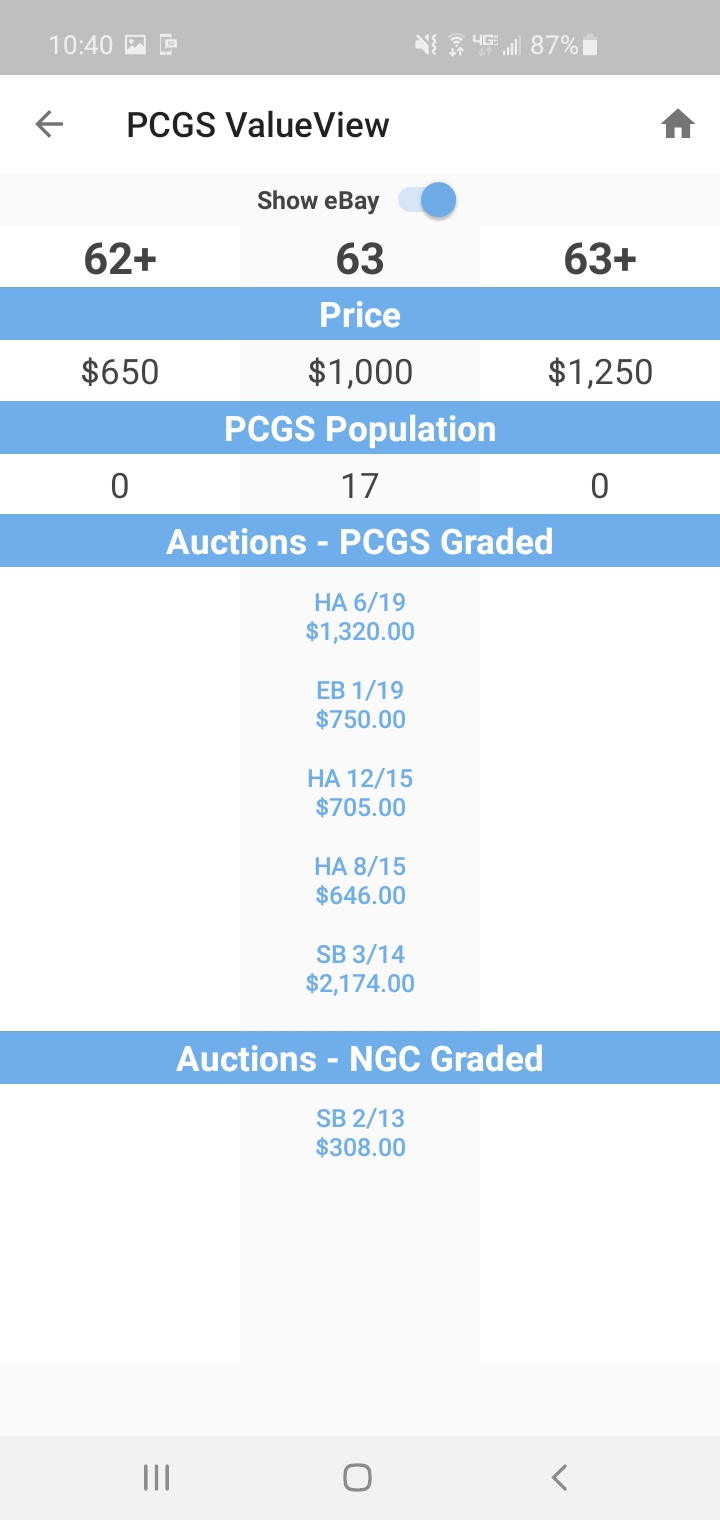Lincoln Cent Help Needed
 ilmcoins
Posts: 525 ✭✭✭✭
ilmcoins
Posts: 525 ✭✭✭✭
This is an interesting dilemma. I am a little lost with this...
I sent in a 1922 Weak D Weak Reverse Die 3 to ANACS and they graded it MS64RB.

This was a solid grade and when you look at this on CoinFacts you can see that it commands quite a premium.

So I decided to cross it to PCGS and here is what it came back as:

Not a terrible drop in value since the 63 and 64s seem to sell for about the same price.
HOWEVER, when you click through to the CoinFacts it takes you to only the Weak D designation. And here are the values there:

Where did I mess up here?
Did I not ask for the Die 3 properly?
I am a little bit of a loss here so maybe a Lincoln collector can help me. @CaptHenway
0
Comments
Have you contacted customer service? If you requested the full designation, then either it should be there, or they can give you a reason why it is not. Cheers, RickO
There is really nothing we can do, did you check with PCGS before sending in to verify that they recognize the die3? And did you specifically note that this is a die 3 coin on the submission? If I remember correctly they made a change to what they recognize for this coin recently but I don't recall what that change was. Call customer service ASAP and see if you can get it fixed (if possible) before it ships out.
My Collection of Old Holders
Never a slave to one plastic brand will I ever be.
I called customer service and they are looking into it prior to shipping.
When you crack out you stand a 80% chance of getting it back with a change. At least this is what I see here on the forum and what I personally experience. There is no reason to have sent that in for crossover.
If you did not crack it out then your instructions were lacking.
Hope I'm wrong for your sake.
bob
ANACS isn't PCGS.
I knew it would happen.
sent it in still in the slab.
It is if PCGS doesn't recognize die 3.
bob
The PCGS values and auction prices cited in the OP are for a "no-D, weak reverse", not a "weak-D, weak reverse". The no-D '22-D has always had a greater demand and value for both weak and strong reverse cents.
Here is the "no-D, weak reverse" CoinFacts page (for RB)
Here is the "weak-D, weak reverse" page
Lance.
(edit typo)
PCGS stopped recognizing (even removed it from Variety sets) the 1922 Weak Rev NO D maybe a year ago ?? Maybe they are not recognizing the same for the Weak D.
WS
I think this has it correct - until recently PCGS had three designations for this date:
It looks like they are now lumping the last two together as "Weak D", but maybe still designating the die pair if it can be ascertained?
Honestly this is just a marginally informed guess, my suggestion is to call PCGS and ask for clarification.
Sean Reynolds
"Keep in mind that most of what passes as numismatic information is no more than tested opinion at best, and marketing blather at worst. However, I try to choose my words carefully, since I know that you guys are always watching." - Joe O'Connor
The Lincoln Cent Resource says...
xxxxxxxxxxx
All 1922 weak D or No D coins fall into one of 7 categories:
1. Die Pair #1 Weak D (Weak Reverse)
2. Die Pair #1 No D (Weak Reverse)
3. Die Pair #2 No D (Strong Reverse) also called 1922 Plain
4. Die Pair #3 Weak D (Weak Reverse)
5. Die Pair #3 No D (Weak Reverse)
6. Die Pair #4 Weak D (Weak Reverse)
7. Die Pair #4 No D (Weak Reverse)
PCGS, NGC and some other grading services do not distinguish between the seven varieties above. PCGS and NGC authenticate Die Pairs #1, #3 and #4 as either “1922 weak D” or “1922 No D weak reverse”. Die Pair #2 is authenticated as “1922 No D strong reverse”.
ANACS does things a little bit differently. Only Die Pair #2 is given a “No D” classification. Die Pairs #1, #3 and #4 are all classified as “Weak D’s” regardless of the strength of the mintmark.
xxxxxxxxxxx
The above may be a little dated. As WS and Sean said, it appears PCGS is no longer making a distinction between obverse die states when paired with weak reverses (as they once did). They are all just "weak reverse".
Perhaps the reason for PCGS's change of heart, if we are guessing correctly, is because the clarity of the MM on the obverse paired with the weak reverse is simply the result of grease filling which varied, producing stronger, weaker, and no-D effects.
The MM of the obverse paired with the strong reverse was actually removed due to die maintenance/lapping, and not from grease.
Regardless, @ilmcoins was concerned about the significant difference in value. OP has a weak-D, weak reverse and was comparing old sales of no-D, weak reverse. Apples and oranges then. Maybe the same fruit salad now.
Lance.
Part of the reason why I am doing a book on them.
Interesting to see info that was once recognized and put on a slab not recognized any more. Perhaps it is a topic for a new thread but I am not aware of other instances (different coins) where this is also the case.
Agree about the apples to oranges. I did pull the wrong set.